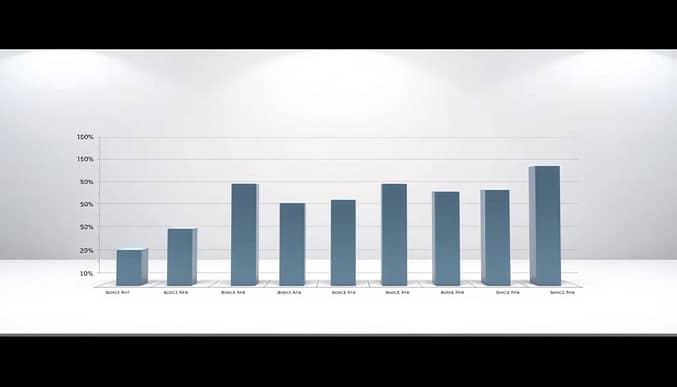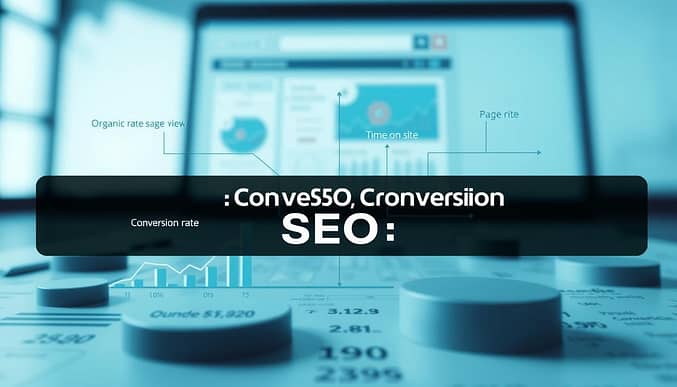What Is Bounce Rate in SEO? Learn How to Improve Your SEO
Understanding how visitors interact with your site is crucial for online success. A critical metric for measuring this behavior tracks the percentage of users who leave after viewing only one page. This measurement reveals whether your content aligns with audience expectations and search intent.
High percentages often signal mismatched content, slow loading times, or poor design. Conversely, low numbers suggest visitors find value and explore further. Platforms like Google Analytics provide detailed insights into these patterns, helping businesses identify opportunities for improvement.
Modern interpretations of this metric go beyond simple exits. They consider user engagement duration and interaction depth. Analyzing these factors helps create strategies to keep audiences engaged longer while boosting conversion potential.
Key Takeaways
- Measures single-page visits without further interaction
- Directly impacts search engine rankings and conversions
- Google Analytics remains the primary tracking tool
- Content relevance and page speed influence results
- Optimal percentages vary by industry and page type
What is Bounce Rate in SEO?
A key performance metric in SEO analytics reveals visitor retention challenges and opportunities. This measurement helps identify whether audiences stay to explore or leave immediately after landing on a page.
Definition and Core Metrics
Bounce rate represents the percentage of single-page visits where users exit without triggering conversion events or exploring other pages. Modern platforms like Google Analytics now evaluate sessions using engagement thresholds:

- Session duration exceeding 10 seconds
- Multiple pageviews or clicks
- Completed downloads or video plays
Unlike exit rate—which tracks departures from specific pages—this metric focuses on initial interactions. For example, a blog post might have a higher acceptable percentage than an e-commerce product page.
Historical Evolution of the Metric
Early analytics tools defined it simply as visits ending on the entry page. GA4’s updated approach considers active engagement, reflecting how users interact with dynamic content. This shift helps businesses distinguish between quick exits and meaningful interactions.
“The evolution from counting pageviews to measuring engagement duration revolutionized how we interpret audience behavior.”
Understanding these changes ensures accurate data interpretation. Brands can now pinpoint whether design flaws, slow speeds, or irrelevant content drive visitors away.
Understanding the Importance of Bounce Rate
Website performance hinges on how effectively pages retain visitor attention. This metric serves as a critical health check for digital strategies, revealing whether audiences stay engaged or abandon ship prematurely.

Key Influences on SEO and Conversion Rates
Lower percentages often translate to better search rankings and higher sales. Studies show ecommerce platforms average a 40-60% range, while blogs might see 70-90% due to different user goals. Here’s why this matters:
- Search engines prioritize sites where visitors explore multiple pages
- Every 10% reduction in single-page exits boosts conversion potential by 7% (MarketingSherpa)
- Mobile-friendly designs cut abandonment by 35% on average
Three elements make or break retention:
- Loading speed under 3 seconds
- Clear content hierarchy with visual breaks
- Relevant internal links guiding visitors deeper
Improving these factors doesn’t just reduce bounce rates—it transforms casual browsers into loyal customers. Sites with engaged users receive 2.3x more organic traffic than competitors with higher exit percentages.
Analyzing Bounce Rate in Google Analytics 4
Modern analytics platforms have transformed how we measure visitor retention. Google Analytics 4 (GA4) introduces a smarter approach to evaluating interactions, moving beyond outdated pageview-based calculations.
Differences Between UA and GA4
Universal Analytics counted exits after one pageview as bounces. GA4 uses engagement thresholds to assess sessions more accurately:
- Sessions lasting over 10 seconds
- Multiple screen/page views
- Triggered conversion events like downloads
This shift means a 55% blog exit might show as engaged if users scroll deeply or watch embedded videos. Retail sites often see 15-25% lower bounce metrics in GA4 compared to UA.
Interpreting Engagement Versus Bounce Metrics
GA4’s model identifies meaningful interactions rather than simple exits. For instance, a visitor reading a product page for 30 seconds without clicking isn’t counted as a bounce. This aligns with Google’s updated documentation, which prioritizes quality engagement signals.
Marketers gain clearer insights into:
- Content effectiveness through scroll depth
- Mobile user behavior patterns
- Conversion funnel drop-off points
By focusing on active participation, businesses can better optimize pages and reduce premature exits. GA4’s methodology reveals whether visitors leave quickly or engage thoroughly before exiting—a critical distinction for improving website performance.
Bounce Rate vs. Exit Rate: Key Differences
Digital marketers often confuse two critical metrics when analyzing site performance. One tracks departures from entry pages, while the other measures exits across all pages.
Comparative Overview of User Behavior Metrics
Bounce rate specifically measures visitors who leave after viewing only one page. This metric highlights first impressions and landing page effectiveness. In contrast, exit rate tracks departures from any page during a session, revealing where users typically disengage.
| Metric | Definition | Scope | Use Case |
|---|---|---|---|
| Bounce Rate | Single-page exits | Entry pages only | Landing page optimization |
| Exit Rate | Final-page exits | All pages | Funnel analysis |
Consider a visitor reading a blog post about hiking gear. If they leave immediately, it counts as a bounce. If they click to a product page but exit there, that page’s exit rate increases. Both metrics matter, but they answer different questions.
High bounce percentages often indicate mismatched content or slow loading speeds. Elevated exit rates might show checkout process issues or weak calls-to-action. Tools like Google Analytics help identify these patterns through detailed session recordings.
While bounce rate focuses on initial engagement quality, exit rate exposes broader navigation challenges. Smart marketers use both to create targeted improvements across their websites.
Common Causes of a High Bounce Rate
Identifying why visitors abandon websites quickly requires understanding key friction points. Three primary culprits often sabotage retention: mismatched messaging, technical failures, and poor visual experiences.
Misaligned Content and User Expectations
Visitors flee when pages don’t deliver what search results or ads promise. A MarketingSherpa study found 68% of users exit when headlines mismatch supporting content. Common mismatches include:
- Product pages lacking pricing details mentioned in ads
- Blog posts failing to answer questions from search queries
- Video tutorials that don’t match thumbnail previews
Google’s 2023 Quality Rater Guidelines emphasize “satisfying user intent” as critical for ranking. Pages ranking for “best hiking boots under $100” but showcasing $200+ products often see 50-70% exit rates.
Design Flaws and Technical Issues
Even valuable content loses audiences with clunky interfaces. HubSpot reports 53% of mobile users abandon sites taking over 3 seconds to load. Other dealbreakers:
- Broken buttons or dead-end navigation menus
- Wall-to-wall text without subheadings or images
- Auto-play videos disrupting reading flow
“A site’s loading speed isn’t just a technical metric—it’s the first impression that determines trust.”
Google’s Core Web Vitals now penalize pages with poor interaction responsiveness. Fixing these issues can slash bounce percentages by 40% within weeks, according to SEMrush case studies.
Effective Strategies to Reduce Bounce Rate
Combating premature exits requires tactical improvements across content and technical elements. Three proven approaches keep visitors engaged while boosting your site’s performance metrics.
Content Optimization and Bucket Brigades
Use urgency-building phrases like “Here’s why” or “But wait” to guide readers through long-form articles. HubSpot found pages with bucket brigades retain 28% more visitors than static content.
Improving Loading Speed and Mobile UX
Pages loading under 2.5 seconds cut bounce rates by 40%. Use these tactics:
| Technique | Action | Impact |
|---|---|---|
| Image Compression | Reduce file sizes by 60% | -15% bounce |
| AMP Implementation | Mobile load times under 1s | -22% bounce |
| Responsive Design | Pass Google’s Mobile-Friendly Test | -18% bounce |
Google’s PageSpeed Insights shows 68% of sites improve metrics after fixing render-blocking resources.
Leveraging Exit-Intent Popups and Content Upgrades
Target users about to leave with tailored offers. A 2023 case study revealed exit popups capturing emails reduced bounce rates by 22%.
“Offering a downloadable checklist when users move toward the exit button converted 14% of would-be bounces.”
Combine these strategies to create a seamless journey that converts casual clicks into meaningful engagement.
Enhancing User Experience and Content Readability
Visitors judge websites within seconds. How content looks often determines whether they stay or leave. Smart design choices and readable layouts turn skimmers into engaged readers.
Design Best Practices and Visual Engagement
Clean layouts with strategic white space reduce cognitive overload. Airbnb’s homepage demonstrates this perfectly—minimal text, bold imagery, and clear navigation buttons. Key principles:
- Use contrasting colors for headlines and CTAs
- Break content into 3-5 line paragraphs
- Add relevant images every 300 words
Mobile-first designs now drive 58% of web traffic. Google’s Mobile-Friendly Test helps identify issues like cramped buttons or unreadable fonts. Pages passing this test see 19% longer session times.
Tips for Creating Skimmable and Accessible Content
Readers scan before committing. Formatting tools help them find value quickly:
- Subheadings every 150-200 words
- Bullet points for lists longer than three items
- Bold keywords for visual anchors
Accessibility matters too. Proper heading hierarchies and alt text for images make content usable for screen readers. Sites following UX optimization strategies report 27% lower bounce rates than competitors.
“Good design isn’t about decoration—it’s about communication efficiency.”
These techniques transform chaotic pages into guided journeys. When visitors effortlessly find what they need, they explore deeper and convert more often.
Leveraging Data and Tools to Track Bounce Rates
Actionable insights emerge when combining quantitative analytics with visual behavior tracking. Platforms like Google Analytics and Hotjar reveal patterns that raw numbers alone can’t capture.
Using Heatmaps and Analytics Tools
Heatmaps expose dead zones where visitors lose interest. For example, Crazy Egg data might show 80% of users abandon a page before scrolling past the first image. Pair these findings with GA4’s Engagement Rate metric to identify:
- Pages with high exit percentages despite long session durations
- CTAs ignored by 90% of mobile users
- Videos that retain viewers for under 15 seconds
Create custom reports tracking bounce rates alongside scroll depth and click-through rates. One ecommerce brand reduced single-page exits by 31% after discovering product videos auto-played on mobile, overwhelming users.
Optimizing Internal Linking for Better Engagement
Strategic connections between content keep visitors exploring. Analyze link placement effectiveness using this framework:
| Page Type | Optimal Links | Impact |
|---|---|---|
| Blog Posts | 3-5 contextual links | +22% pageviews |
| Product Pages | 2 cross-sell suggestions | +17% conversions |
Tools like SEMrush’s Site Audit identify orphaned pages lacking inbound links. A travel website decreased its website bounce rate by 19% after adding “Related Destinations” sections with targeted anchor text.
“Data transforms guesses into growth strategies. Weekly reviews of engagement metrics help teams spot trends before they become problems.”
Conclusion
Mastering visitor retention requires balancing three pillars: content alignment, technical precision, and strategic design. Throughout this guide, we’ve explored how engagement thresholds in GA4 refine measurement accuracy while page speed and mobile responsiveness directly impact user decisions.
Key strategies like contextual internal linking and urgency-driven copywriting keep audiences exploring. Tools like heatmaps reveal hidden friction points, while structured data helps prioritize fixes. Remember – pages serving clear intent with fast load times consistently outperform competitors.
Though not a direct ranking signal, optimized retention metrics signal healthy SEO foundations. Sites combining relevance with seamless navigation earn longer sessions and higher conversions. Start by auditing top-exit pages using GA4’s engagement reports, then implement bucket brigades or content upgrades.
Continuous improvement separates thriving sites from stagnant ones. Test one change at a time – whether compressing images or refining headlines – and track results over 30-day cycles. Every percentage drop in single-page exits strengthens your digital ecosystem’s value to both visitors and search algorithms.